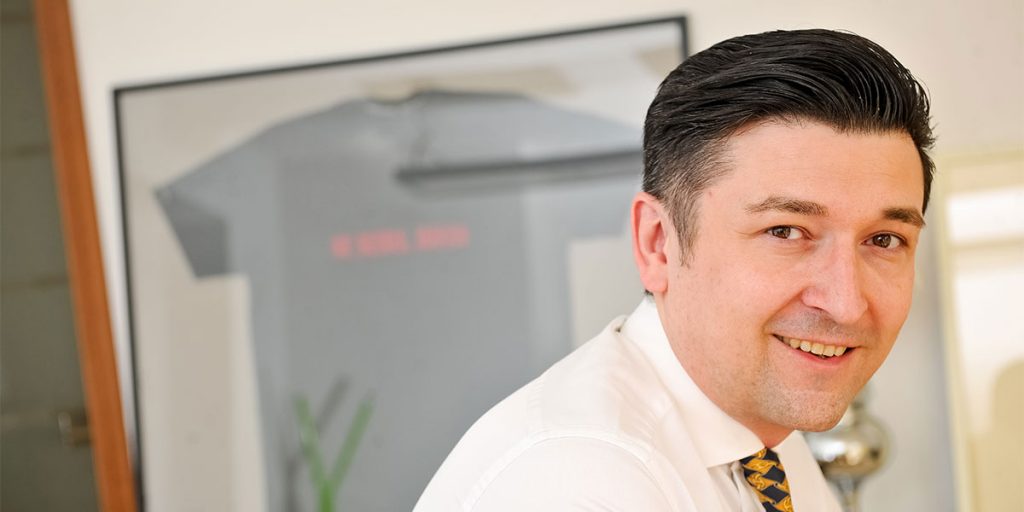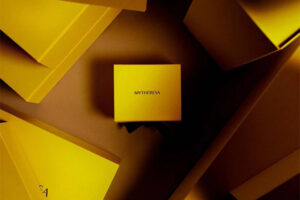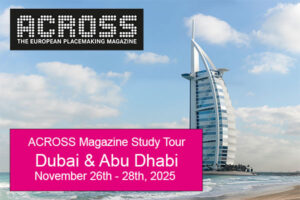ACROSS: The – simply put – poor performance of Westgate over the past years made it necessary to completely reposition the center. Which mistakes were made in the past?
DENIS CUPIC: Westgate Shopping City had been mis-managed for years. Due to several reasons, it was both positioned towards a wrong direction and identified as a solely fashion-oriented mall. Westgate is the largest shopping center in CEE and SEE, therefore it can’t focus on only one segment (such as fashion). The tenant mix must be different from a smaller format center, and shoppers (audiences) should be targeted very carefully.
ACROSS: Which marketing activities were in place at that time?
CUPIC: When we took over Westgate’s management, we found ourselves in a situation where most marketing activities targeted audiences that were not the ones that actually shopped at the center. This means that a lot of money was spent on marketing efforts each month without satisfying ROI. For instance, a lot of advertising was addressing the east of Zagreb, whereas most of our daily customers come from the western parts and northern region outside of Zagreb. Additionally, there were no established relationships or any kind of communication with the tenants. In our first weeks, we met all of our tenants, started an honest discussion about the challenges they experience and our plans. Therefore, we gained their support which lead to contract extensions of key tenants, as well as existing tenants opening new, more expansive stores.
ACROSS: Which were basic strategies and parameters for this reposition and when did you start to implement them?
CUPIC: While the ownership structure was being changed, our team prepared to take over the management role. After identifying Westgate’s strengths and opportunities on the market in collaboration with the owners, we agreed on a short-term and mid-term strategy.We made the first changes as soon as we assumed our management responsibilities–including a different marketing approach, financial re-structuring and changes to the tenant mix.Our strategy is mostly based on our experience in retail, as the F.O. / Group developed and managed different projects throughout the whole SEE region, mainly in Croatia, over the last 20 years.
ACROSS: Who did you identify as your target group?
CUPIC: We re-targeted Westgate’s communication, identifying direct catchment areas from the western parts of Zagreb to the north-west of Croatia. This area is populated by 580,000 residents who are in less than a 20-minute drive away and it doesn’t gravitate directly towards any other shopping center. This our customer base: work-week shoppers who we can count on if we satisfy their needs with appropriate tenant mix and, of course, communicate to them.The mid-catchment area and large catchment area are larger, with up to 3.5 million people from northern and central Croatia, Slovenia, and southern Austria, as well as the shoppers who are in transit. We focused on improving the tenant mix for weekend shoppers to attract customers from this larger catchment area
ACROSS: In which way(s) did the tenant mix and the retail landscape change?
CUPIC: Prior to the center management takeover, we pre-defined how the ideal tenant mix should be. With over 92,000 sq m GLA, Westgate Shopping City needs to offer more than just fashion. On the other side, there are five other (larger-format) malls and a dozen of smaller malls – all of them offering mostly the same fashion brands. We strengthened the mix with shops specialized for babies and kids, as well as home interior and furniture shops. Therefore, we created “clusters” – such as our interior cluster Westgate Home, which offers around 20 national and international interior design brands on more than 20,000 sq m. In the past year we opened or enlarged more than 20 shops – including international brands, such as TEDi, kik, United Colours of Benetton, Sancta Domenica MegaStore, Baby Center Flagship, MöbelLand, Prima, Intermod, Alde, BabyLand, Idexe. In the coming year we focus on bringing three big international fashion tenants to the center, which are not yet present, either in central Croatia or in all Croatia. Our goal is to have more unique offers in the fashion segment and improve the existing stores. Comma, for example, will expand and open a new style shop in the coming months.
ACROSS: Which steps did you take regarding the food & beverage segment?
CUPIC: Instead of a conventional food-court that can be found in most centers with a number of fast-food brands, we changed our gastronomy offer by raising the quality and variety of the food. Batak Grill–a famous Croatian restaurant chain–will open a restaurant in Westgate in the coming months. The Croatian fast food chain Ali Kebaba came to the center last year, and a second Leggiero Caffe, branded Leggiero Loft, opened as well. All our café and restaurant tenants refurbished their facilities last year, improving their offers as well as their looks.
ACROSS: Entertainment is also important…
CUPIC: …therefore our indoor playground, with its 4000 sq m, is being refurbished right now and some segments will be available not just for children but also for teenagers, as it will also include a gaming arcade. There will also be a Dad’s Bar, a corner for fathers, as well as a new family restaurant, five birthday rooms, and a unique cinema for kids with 70 seats, which is already opened, complementing the family entertainment offer. End of last year we opened a large Rock’n’Bowl bowling center with a lounge bar, restaurant, and Germania Casino, who are the first big tenants in our so-called 24 Hours Zone, an entertainment cluster where two additional restaurants will be opening. We also have concrete plans for a multiplex cinema with six theaters and a local disco on top of our garage, for which we already have an interested operator. The Loft opens in the 24 Hours Zone in October; this is a unique event venue with a large kitchen. It can be used as a conference or event venue seating 350 guests indoors, and also features a large outdoor terrace in a modern industrial design.
ACROSS: How has the center’s performance changed in terms of frequency and turnover?
CUPIC: Footfall had been falling for more than four years. Only a couple of months after we made our changes, footfall in comparison to a previous year had already increased. This year, we see stable growth.Westgate has a strong conversion rate – the consumption per visitor is very high in comparison to other shopping centers. People who come to Westgate actually shop, which is a strong KPI in days when people go to malls just for a walk, or a coffee. We are working on improving our entertainment offer and want to be a part of the community, but we also maintain the high conversion rate with an attractive mix and offers for customers from a wider catchment area.
ACROSS: You said it was crucial for Westgate to establish itself as a regional as well as a supra-regional mall. How do you master this balancing act?
CUPIC: Correctly identifying and distinguishing between small/medium catchment areas and large catchment areas is vitally important for our success, both as a surpra-regional and a regional shopping center.For the small and medium catchment areas we focus on Croatia and target around 1.3 million inhabitants (Zagreb City, Zagorje county, Varazdin county). The largeer catchment area focuses on Slovenia and Austria, targeting around 3.5 million people.Both Slovenia and Austria have restricted opening hours on weekends and are well connected to Westgate by a highway. Since Westgate is not in the center, but on the outskirts of Zagreb (right along the highway, to be exact), it takes only 1.5 hours to drive from Graz to Zagreb.
ACROSS: This means you are targeting customers from both countries?
CUPIC: Westgate can become a weekend shopping-tainment destination by recognizing the particular needs of Slovenian and Austrian visitors and developing the right offer, including not only shops but leisure and entertainment offers, good gastronomy, and specialties such as the large indoor playground. The Westgate Home Cluster also targets Slovenian and Austrian customers with its offer, by providing brands which are not available in Graz or Maribor, as well as the Baby Center Flagship, which is the largest store for kids in all three countries on 2,300 sq m. There are also other children-oriented stores as well as fashion tenants. Some are LPP brands which are not available in Austria. Due to its location near the highway, Westgate is also an ideal stop for tourists in transit. This summer we organized several promotional activities on the border crossing and highway, which yielded good results, and in a few weeks we will start communicating our offer in Slovenia and Austria.
ACROSS: Managing malls successfully also means to react consistently to any changes in the retail landscape. How do you stay abreast of these changes?
CUPIC: You have to know today what you will do in five years, and what you want to do in ten years. Retail is changing and online is taking over an increasingly large share of it. We are not implementing today’s trends at Westgate, we are working on tomorrow’s trends. We watch other shopping centers in Europe very closely, we see their challenges and try to adapt. Becoming a “niche” mall, developing the customer experience of shopping processes as well as mall visits, and most important of all – knowing your customers and their needs should keep you abreast of any challenges and changes.
ACROSS: What does this mean in practice?
CUPIC: At Westgate, we focus on attracting more of our tenants’ flagship formats to provide a unique offer as well as on implementing their “click & collect” destinations to improve the omni-channel offer. Our concept has been developed by ATP and makes Westgate a unique among other malls in Croatia and we are easily accessible for a larger catchment area, far away from the city’s traffic jams. We have an elaborate distribution concept with a central distribution court in the very heart of the center where trucks enter through the tunnel under the garage. Therefore, distribution can also be done during regular working hours. Three large loading dock zones along the outer façade are all independently accessible, visually hidden, and separated from the customers parking. An elaborated storage offer for our tenants completes this concept an makes Westgate a strong and stable center for coming omni-channel trends.
ACROSS: Are you already negotiating with new tenants? How hard is it to bring new international players to Zagreb?
CUPIC: It is very hard to gain a tenant’s trust and bring him to your center, as they are entrusting you with their reputation (and money). Especially if you don’t have a successful history to back you up. Before we even tried to sign new tenants, we wanted to make sure that we have the trust of our existing tenants. Since management changed, none of the tenants terminated their contracts–except the ones that made the decision before the change and the ones that we were not happy with. Today we have all five brands of the LPP Group (Reserved, Cropp, House, Mohito and Sinsay), Müller, H&M, CCC, Deichmann, Pepco, dm, Parfois, Bipa, Yammamay, Hervis, Adidas, Poleo Sport, Mango, New Yorker, Orsay, Tally Weijl, Tom Tailor, Europa 92, Sisley, Next, Idexe, Eureka, Baby Center, C&A, Terranova, KiK, Mass, s.Oliver, Comma with stable contracts as well as all new tenants in the Home Cluster, including Tedi, Möbel Land, Prima, Alde, Intermod, and Happy House. In the medium term, we want to attract USP tenants when they enter the Croatian market.
ACROSS: What are the requirements of international retailers?
CUPIC: Westgate’s architecture allows an easy adaptation to new large-format tenants, giving them a strong regional location with superb accessibility and visibility. It is much harder for other centers to enlarge the sales areas due to their lack of parking facilities and traffic jams, whereas Westgate has a secured 7,500 parking spaces – that is more than twice as much as at other malls. All of this allows us to offer sales areas of 5,000 sq m or more to tenants that usually operate one store in a region and think about coming to Croatia in the upcoming years.
ACROSS: Are there any new developments around Westgate?
CUPIC: The first new developments in Westgate’s area are coming next year, with a 120 keys hotel being built. We also negotiating with other interested investors for further developments in the area surround Westgate, as it is a fully connected and developed zone with 480,000 sq m of construction land, which can be individually adapted to meet the needs of investors.






